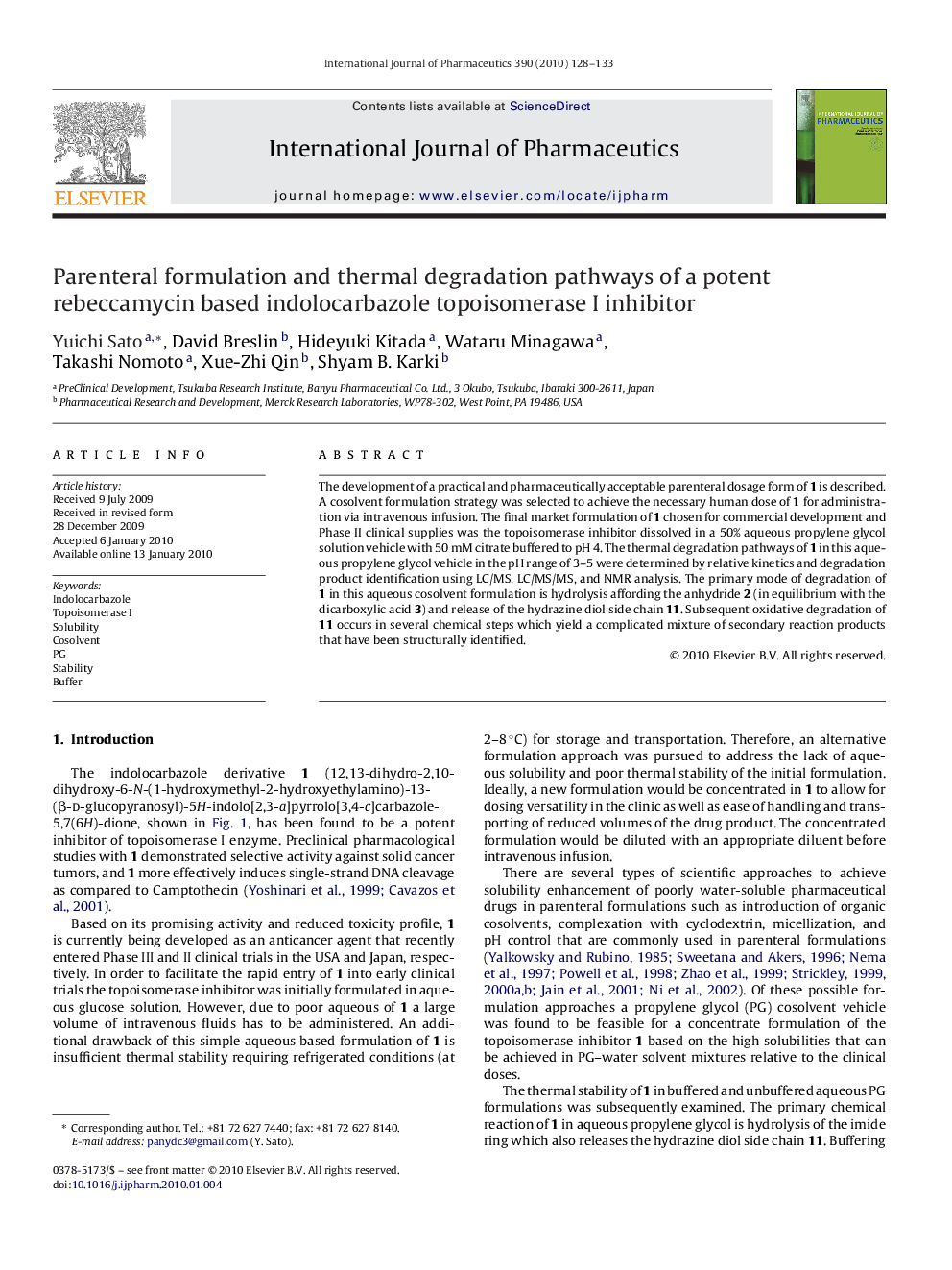| Article ID | Journal | Published Year | Pages | File Type |
|---|---|---|---|---|
| 2504164 | International Journal of Pharmaceutics | 2010 | 6 Pages |
The development of a practical and pharmaceutically acceptable parenteral dosage form of 1 is described. A cosolvent formulation strategy was selected to achieve the necessary human dose of 1 for administration via intravenous infusion. The final market formulation of 1 chosen for commercial development and Phase II clinical supplies was the topoisomerase inhibitor dissolved in a 50% aqueous propylene glycol solution vehicle with 50 mM citrate buffered to pH 4. The thermal degradation pathways of 1 in this aqueous propylene glycol vehicle in the pH range of 3–5 were determined by relative kinetics and degradation product identification using LC/MS, LC/MS/MS, and NMR analysis. The primary mode of degradation of 1 in this aqueous cosolvent formulation is hydrolysis affording the anhydride 2 (in equilibrium with the dicarboxylic acid 3) and release of the hydrazine diol side chain 11. Subsequent oxidative degradation of 11 occurs in several chemical steps which yield a complicated mixture of secondary reaction products that have been structurally identified.
